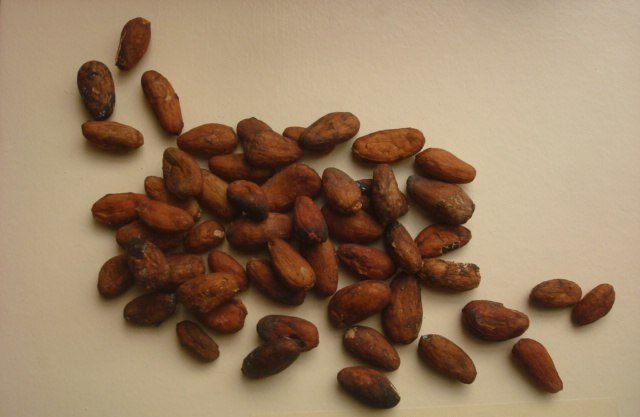An Israeli firm is pioneering lab-cultivated cocoa beans, the first such move outside the tropics.
The company, Celleste Bio, says that it can now grow the beans to maturity without pods in a week’s time.
According to the company’s CEO M. Beressi Golomb, the cocoa grows on a bioreactor, which has become a virtual “forest.”
This process does not employ gene-editing techniques but rather uses cells of actual cocoa beans and reproduces them.
The company reveals that it takes just a single or two beans to replicate cells in a bioreactor solution. This solution “cheats” the cells into growing without a pod till their produce is ready to harvest in seven days.
The harvest involves just milking butter from the mature beans and converting it into chocolate.
The remainder of the husks can make cocoa powder the same way roasted beans do on an actual processing facility.
If commercialized, these lab alternatives could help control a reigning 45-year cocoa bean supply low, amid rising chocolate prices.
Indeed, the company seeks to recoup the production of a resource that by May 2024 was experiencing a 439,000–tonne global deficit.
Coming into play is Celleste Bio’s affiliations with the chocolate giant, Mondelez International, which means a ready market.
This at a time when chocolate demand is edging towards a global market value of $161.56 billion come 2027, per World Metrics.
Europe and the United States could fuel the utility part of lab-cultivated cocoa beans for they lead consumption worldwide. The U.S. market for instance, was worth $2.48 billion in 2020.
Lab-cultivated Cocoa also in California
Speaking of the U.S., growing cocoa beans in a lab is already happening here, too, via California Cultured company.
Details show that the company also uses cells in sugar water, and lets them multiply till maturity in seven days.
The West Sacramento-based firm aims to start commercial sales of its produce in the course of 2025.
Thus, demand for currently deficient dark cocoa has prompted the emergence of lab-cultivated cocoa beans in Israel and California. To learn more about the mainstream farm-based cultivation of cocoa worldwide, read on in the statistics section next.
Global Cocoa Cultivation Statistics
One of the reasons companies are striving to grow cocoa in labs is to reduce the environmental toll on land. Cocoa cultivation consumes huge acreage, as the following country-by-country FAOSTAT statistics of the top 6 cocoa-producing nations show. Ivory Coast led acreage in 2022 at 4,397,047 hectares, followed by Ghana at 2,074,417 hectares. Following suit was Indonesia at 1,442,403 hectares and Nigeria at 1,020,906 hectares. Cameroon and Brazil rounded up countries with more than 0.5 million hectares at 621,611 and 590,232 hectares respectively. Notably, some of this acreage is on forestland, which leads to accusations of lack of sustainability.
How much world cocoa grows via sustainable means?
Sustainability indicates cultivation in legal areas without deforesting adjacent land. According to the International Institute for Sustainable Development (IISD), the world produced between 1.52 and 2.66 million tonnes of sustainable cocoa in 2019. This volume represented 27 to 45% of the global cocoa output and it came from 0.8 million farmers, worldwide. Africa produced 85% of the sustainable tonnage, 706,072 tonnes of which from Ivory Coast alone, while Latin America and the Caribbean supplied 11%.
Do chocolate companies buy sustainably grown cocoa?
In 2020, 1.68 million tonnes of sustainable cocoa went to the world’s top five chocolate companies. These included Mondelez Intl., Nestle, Mars, Hershey co., and Ferrero Group. On top of these purchases, the global demand for sustainable cocoa grew by 6.9% from 2015 to 2019.
Is processing cocoa beans hard after leaving the farm?
Once cocoa pods mature, farmers crack them to extract the beans before a tasking fermentation and drying process. It takes 11/2 to 3 days to ferment and dry the wet beans to 7.5% of their original weight. Dried beans are pricier than wet beans because of the labour-intensive processing work they require.
